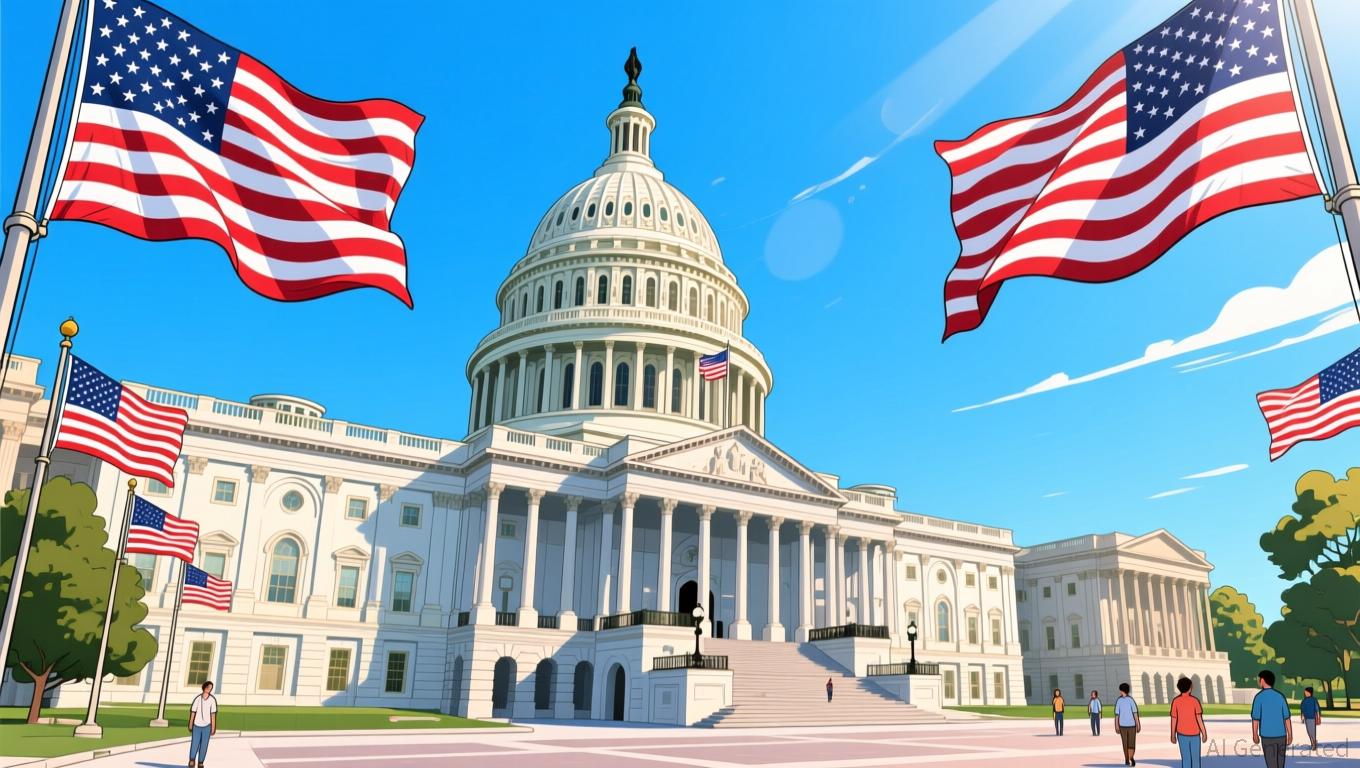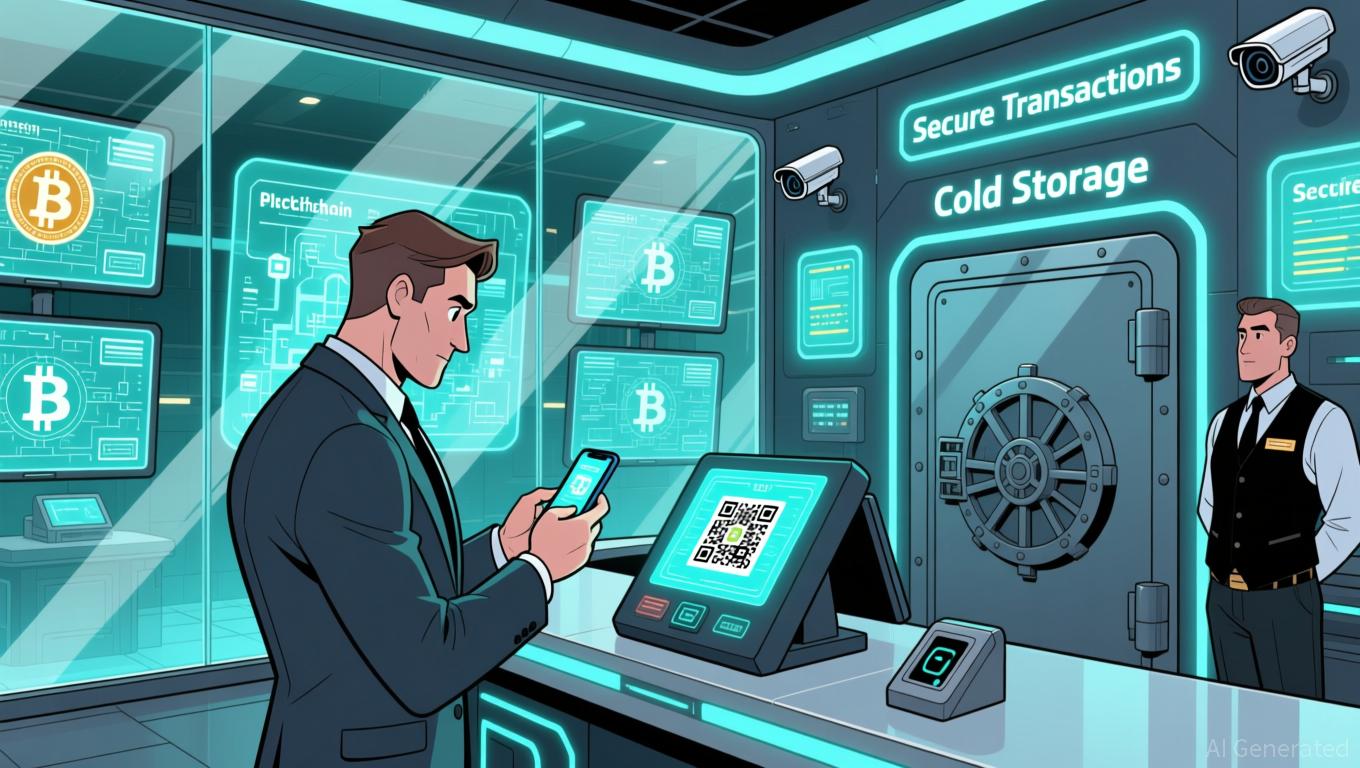From Smartphone Mining to Widespread Use: Pi Coin's DTI Code Drives Practical Cryptocurrency Integration
- Pi Network secures DTI code to enable exchange listings and banking integration, advancing mainstream adoption of its mobile-mined cryptocurrency. - With 21M+ verified users and SCP-based consensus, Pi emphasizes energy efficiency and accessibility through smartphone mining and low-cost transactions. - Capped supply, decreasing mining rewards, and transparent governance bolster trust, while growing exchange volumes ($10M+ daily) signal institutional potential. - Challenges remain in regulatory compliance
Pi Network’s Pi Coin has made a notable advancement toward mainstream use by obtaining a DTI (Digital Token Identifier) code, which streamlines its integration with leading exchanges and financial institutions. This milestone, highlighted in a February 2025 Mainnet launch update, marks the project’s evolution from a mobile mining initiative to a fully operational blockchain platform. With more than 21 million verified users and a rising number of Mainnet participants, Pi is establishing itself as a practical, energy-saving digital currency with tangible applications
The DTI code, which serves as a universal identifier for digital currencies, allows Pi to be listed on trading platforms and handled by banks, improving both its liquidity and reach. This achievement follows several months of infrastructure enhancements, such as enabling external wallet support and exchange integration.
Pi’s mobile-centric design is one of its standout features. In contrast to conventional proof-of-work coins, Pi lets users mine directly from their smartphones, eliminating the need for power-hungry equipment. The network uses a consensus protocol inspired by Stellar SCP, which keeps transaction fees and operational costs low, making it accessible even in areas with limited resources.

Pi’s tokenomics further enhance its attractiveness. The total supply is capped at 100 billion tokens, with issuance carefully managed to avoid rapid inflation. As more users join, mining rewards are reduced, encouraging early participation while preserving scarcity.
Being listed on exchanges has significantly boosted Pi’s profile. The coin is now available on platforms with daily trading volumes reaching tens of millions, and its market capitalization sits in the low billions. This level of liquidity, together with the DTI code, makes Pi more appealing to institutional investors and helps pave the way for regulatory approval, both of which are essential for widespread adoption.
Nonetheless, skeptics point out that Pi’s future depends on consistent progress. Regulatory challenges, rivalry from established cryptocurrencies, and the necessity for a strong developer community are ongoing obstacles. For now, Pi’s emphasis on ease of use and real-world functionality fits well with the broader movement toward crypto adoption, especially in markets looking for alternatives to conventional banking.
Disclaimer: The content of this article solely reflects the author's opinion and does not represent the platform in any capacity. This article is not intended to serve as a reference for making investment decisions.
You may also like
Bessent: Raising the Debt Ceiling by July Is Essential to Prevent Market Turmoil
- US Treasury Secretary Bessent reiterated the economy is not at recession risk despite fiscal debates and market volatility. - He warned the debt ceiling must rise by July 2025 to avoid default, stressing "full faith and credit" is non-negotiable. - Corporate resilience (e.g., Ross Stores' strong earnings) contrasts with Fed policymakers' split on rate cuts amid inflation concerns. - Trump's $2,000 "tariff dividend" proposal faces congressional hurdles, with Bessent acknowledging it requires legislative a

Trump’s Andrews Golf Renovation: Who Pays the Taxpayer Tab?
- President Trump enlisted Jack Nicklaus to renovate aging golf courses at Joint Base Andrews, part of his White House-related construction projects. - The $300M+ portfolio raises questions about funding sources, mirroring controversies over unclarified costs for other projects like the Paris-style arch. - Nicklaus Design, with 425 global courses, will lead the overhaul despite Trump's claim of "very little money" needed, while critics scrutinize public-private spending blending. - The 15-mile White House-

Crypto Casinos Strive for Security, Fast Transactions, and Regulatory Reliability
- Crypto casinos face heightened scrutiny as demand grows for secure, efficient platforms prioritizing fund transparency and rapid withdrawals. - Coinbase's wallet migration highlights proactive security measures, aligning with crypto casinos' need for robust cybersecurity to protect user assets. - UK's NCA dismantled a $1B crypto laundering network, demonstrating blockchain traceability's role in combating crime and bolstering trust in compliant platforms. - BitForex's KYC enforcement and withdrawal updat

As Cancer Takes Her Life, JFK Descendant Opposes Cousin's Health Policies
- JFK's granddaughter Tatiana Schlossberg revealed terminal AML diagnosis, criticizing cousin RFK Jr.'s cuts to mRNA vaccine research funding critical for cancer therapies. - RFK Jr.'s HHS nomination faces scrutiny as his anti-vaccine policies align with CDC's revised guidelines, raising concerns about public health trust and research equity. - OCRA's new policy center and interactive map aim to accelerate cancer research access, responding to Schlossberg's advocacy for equitable clinical trial resources.
